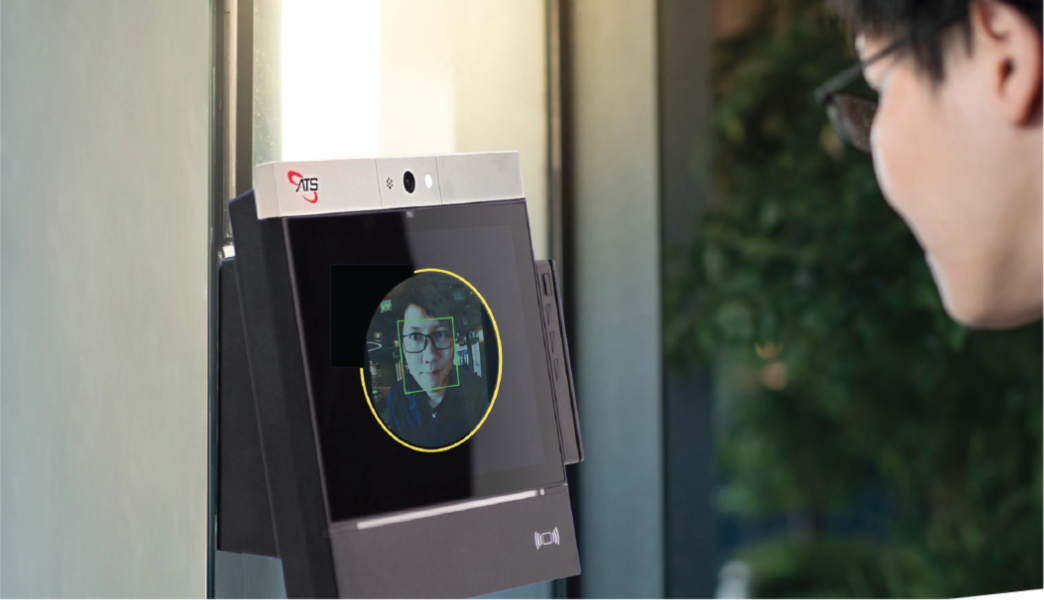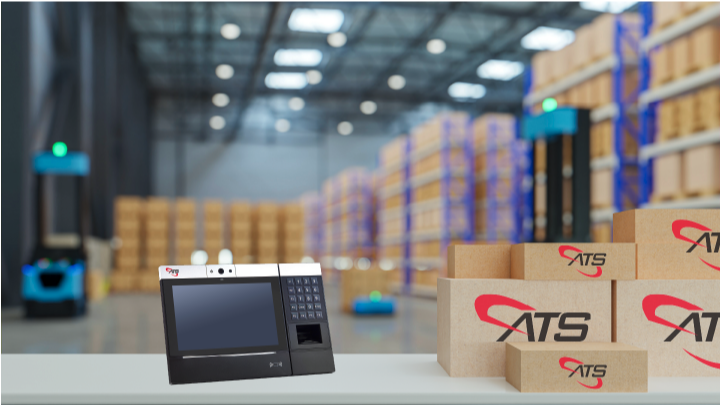As technology continues to progress, automating the collection of employee attendance is critical for running accurate payroll, but it’s not necessarily sufficient enough. The next strategic business move is ensuring that your customers also don’t fall prey to time theft and buddy punching
If one employee clocks in for another, the machine is capturing an “accurate” date and timestamp for that attendance record. The problem is that the other employee may show up 8 minutes after their buddy punched in for them. When that 8 minutes gets included in the employee’s paycheck, it means the company ran an inaccurate, bloated payroll
The challenge is that the typical attendance machine can’t distinguish between employees. It can only distinguish between employee identification numbers it collects through cards and badges. Whereas a facial biometric attendance system can differentiate between the employees standing in front of the attendance machine.
Companies that use a facial recognition system can significantly reduce time theft that occurs at the time clock, saving themselves considerable money by not overpaying for labor. When you offer your customers the opportunity to collect attendance data by face recognition, you’re offering a state-of-the-art tool to manage labor costs and employee attendance.
Companies Need a Time Theft Solution
Any effort by an employee to get paid for hours they’re not working is time theft. If a company believes they aren’t overpaying for labor due to time theft, they’re probably wrong.
In a survey of accountants conducted by Quickbooks Time, 92% said they had clients paying higher labor costs due to time theft, adding an average of 5% more to their gross payroll costs. In a employee survey by Software Advice, 43% of the respondents said they engaged in time theft and that a quarter of employees did so more than 75% of the time. Of those employees, 75% stole more than 10 minutes a day, with some stealing as much as an hour a day. Indeed, a study by the American Payroll Association found that 75% of companies experience buddy punching.
Unfortunately, employees have several methods of engaging in time theft. Using a time clock attendance system eliminates many of them, such as employees overreporting hours worked on manual time sheets or not clocking out for unpaid breaks. However, only when a face attendance machine is part of that time collection software system can it reduce one of the greatest sources of time theft: buddy punching. Buddy punching alone has cost U.S. employers as much as $373 million a year.

Introducing Our Biometric Face Recognition Solution
Our stride®80 is the most innovative and flexible time clock you can offer your customers. Now, we’ve made it even better by combining it with an optional Facial Recognition System.
The Only|You™ facial recognition system maps the geometry of a person’s face, collecting hundreds of data points. It then converts those data points to an encrypted data string. This encrypted numerical data string, also called a biometric template, is used to verify a person’s identity when they want to clock in and out.The Only|You facial recognition does not store employee images.
How a Time Clock with Face Recognition Adds a New Layer of Security to Payroll
Time clocks that are part of an advanced time collection software system can be programmed to prevent many methods of time theft associated with misusing time clocks.
For example, people still try to “pad” their paid time by clocking in a few minutes early or clocking out a few minutes late. They can do this around their shift and when they take their breaks. A few minutes a day, applied across the entire workforce, can quickly add up to a significant cost to the company. Even if just five percent of employees do it only some of the time, that will total an ongoing waste of money that will negatively affect any business’s bottom line, regardless of company size. Try our calculator and see how much you could save.
Attendance management software can mitigate this type of padding by applying business rules that set limits as to how early an employee can clock in for a shift. Attendance tracking software can also enforce a business rule that limits how much time after a shift or break ends will be included in payroll.
So there’s a lot an attendance time collection system can do to reduce payroll bloat due to time theft, but it needs to include a biometric reader to eliminate the high costs of buddy punching.
Only Biometrics Can Reduce Buddy Punching
Employees can easily share any credential type used by non-biometric reader options. They don’t even have to share a physical credential; they can share their employee identification number as most time clocks include a keypad option for clocking in and out.
While a sophisticated time collection system can eliminate most time clock time theft methods, a biometric reader option is required to eliminate buddy punching . Only biometric readers can authenticate the identity of the person standing in front of the machine.
Biometric authentication can occur in two ways. Through an identification process, a biometrics system asks “Who is this person?” With the verification process, the biometrics system asks “Is this person who they say they are?”
Here’s a general description of what the biometric system does during each authentication process:
- Identification: A biometric identification process scans the physical feature, converts the data collected into a data string and searches its database of templates to find a match. If a match is found, the person is positively identified. If not, then the person can’t be identified and won’t be allowed to continue.
. - Verification: For a biometric machine to verify a person’s identity, that person must first identify themselves. This could be through an ID number, swipe card, or other badge type. The software uses this information to search its database for a template associated with that employee. Then a biometric scan occurs on the live person, so its resulting data string can be compared to the template selected.
Both authentication processes need a scan of a real user at the time clock to either identify or verify the identity of the individual. Since it’s impossible for employees to share their physical features, only biometric readers can virtually negate buddy punching as a source of time theft.
With a biometric reader, one of the products in a comprehensive employee attendance time collection system, your customers will have the security of knowing they’re running the most accurate payroll possible.
Face Recognition Readers are the Best Choice of Biometric Products
There are a variety of biometric reader options available, but only a face recognition attendance machine offers valuable benefits in addition to helping your customers improve their payroll accuracy and avoid overspending on labor.

Facial Recognition Readers Create a Safer Environment
Pre-Covid, a shared device like a time clock or printer, wasn’t much cause for concern in the workplace. With the pandemic and its impact on people and their employers, businesses are looking for new ways to increase health and safety in the workplace.
A time clock with facial recognition for employees reduces how often they need to touch the time clock . The less often users need to touch the time clock, the less likely the time clock will be a transmission point for any sort of illness.
The facial recognition time clock and stride80 combination further reduces the risk of transmission due to how quickly the clock performs the authentication and clocking in process. Slow time clocks mean employees are bound to gather when waiting. The stride80 has the processing power and memory to operate quickly so employees can clock in and out quickly.
Reach the Widest Market with a Facial Recognition Product
Companies are increasingly interested in biometric attendance options for the increased security and economic advantages they offer. Fingerprint or handprint are common biometric reader options, but not all companies can use them. They aren’t strong choices for any industry or workplace where gloves are used, such as healthcare environments or food service.
Any material, whether glove or other substance, that employees have on their hands will interfere with a hand or fingerprint biometric authentication process at the time clock. The result will be a high number of false positives and false negatives, creating delays, confusion, and frustration at the time clock.
Without biometrics, like face recognition, these companies must continue to use physical credentials that are easily shared among employees. Consequently, they remain at high risk of paying inflated labor costs due to buddy punching.
When you can offer prospects and customers facial recognition, they can access a critical piece of technology that allows them to protect their payroll — while you expand your business opportunities.
3 Ways You Can Integrate Your Software with Our Facial Recognition Solution
We always like to make working with us as easy and as profitable for our partners as possible, so we offer three options to get our Only|You Facial Recognition System into your product portfolio.
Do You Have or Plan to Build an Android-Based Time Collection App?
The stride80 is a web-enabled, Android-based time clock, making it the perfect solution for any ERP or HCM company that has an Android-based time clock app or has it on their road map.
We call the stride80 the most innovative and flexible time clock in the market because it also functions as an Android development platform, making developing new applications that connect the time clock to your solution easy. So if your company has been thinking about building an Android-based time collection application, the stride80 platform can help facilitate that.
In this scenario, we provide the stride80, robust SDK tool kits, and a lot of support. You can use the stride®80 toolkit to develop any sort of Android-based application for the time clock, including a time collection app. The Facial Recognition System toolkit will help you build the integration between the time clock’s facial recognition system and your solution. The Only|You Facial Recognition System includes IDassist , our on screen visual guide to help with initial biometric employee enrollment and everyday time clock use.
Options for Value Added Resellers without a Time Collection App
If you don’t have a time clock time collection application, you don’t need to build one. We have one called TimeCollect. You can resell the stride80 time clocks to your customers with TimeCollect already installed and configured to your desired specifications.With this option, ATS will integrate Only|You Face with TimeCollect.
Managing Your Customer’s Time Clocks
The two integration options for a stride®80 with TimeCollect vary based on whether your company has a communication middleware to transmit and receive data from the time clock to your back-end system and to manage your customers’ time clocks. If you don’t have a middleware to manage your customers fleet of time clocks, you can partner with us to resell the AccuCloud time collection system, which includes middleware with sophisticated biometric template management, among other benefits .
- AccuCloud full service integration: With this option, you can take advantage of the TimeCollect integration with the Only|You Facial Recognition System that our team has already built, which manages the facial recognition system at the time We also build the integration between TimeCollect and your back-end solution, using our cloud-based middleware to manage all communications and data flows, including the biometric template management.
- Build your own integrations: This option is best-suited to VARs that already have a middleware layer or have plans to build one. Companies selecting this option will need to build a web services integration between TimeCollect and the Facial Recognition System and your software.

Talk with our experts for a personalized review of how each option would work for your company and its business goals. Whatever position your company is in, we can help you find the best solution that enables you to offer facial recognition as an advanced tool to customers looking to control labor costs.
